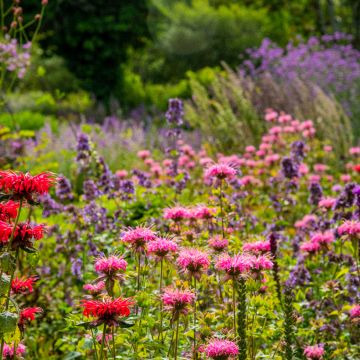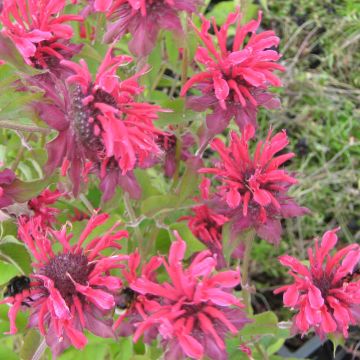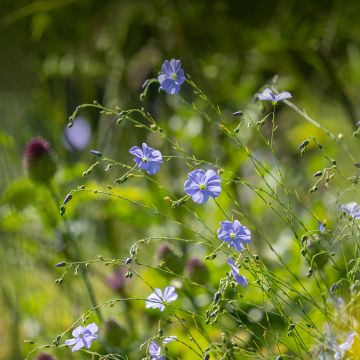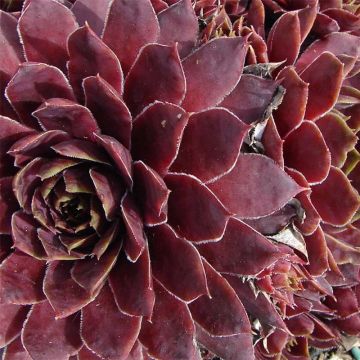

Monarda Cambridge Scarlet - Beebalm


Monarda Cambridge Scarlet - Beebalm


Monarda Cambridge Scarlet - Beebalm


Monarda Cambridge Scarlet - Beebalm
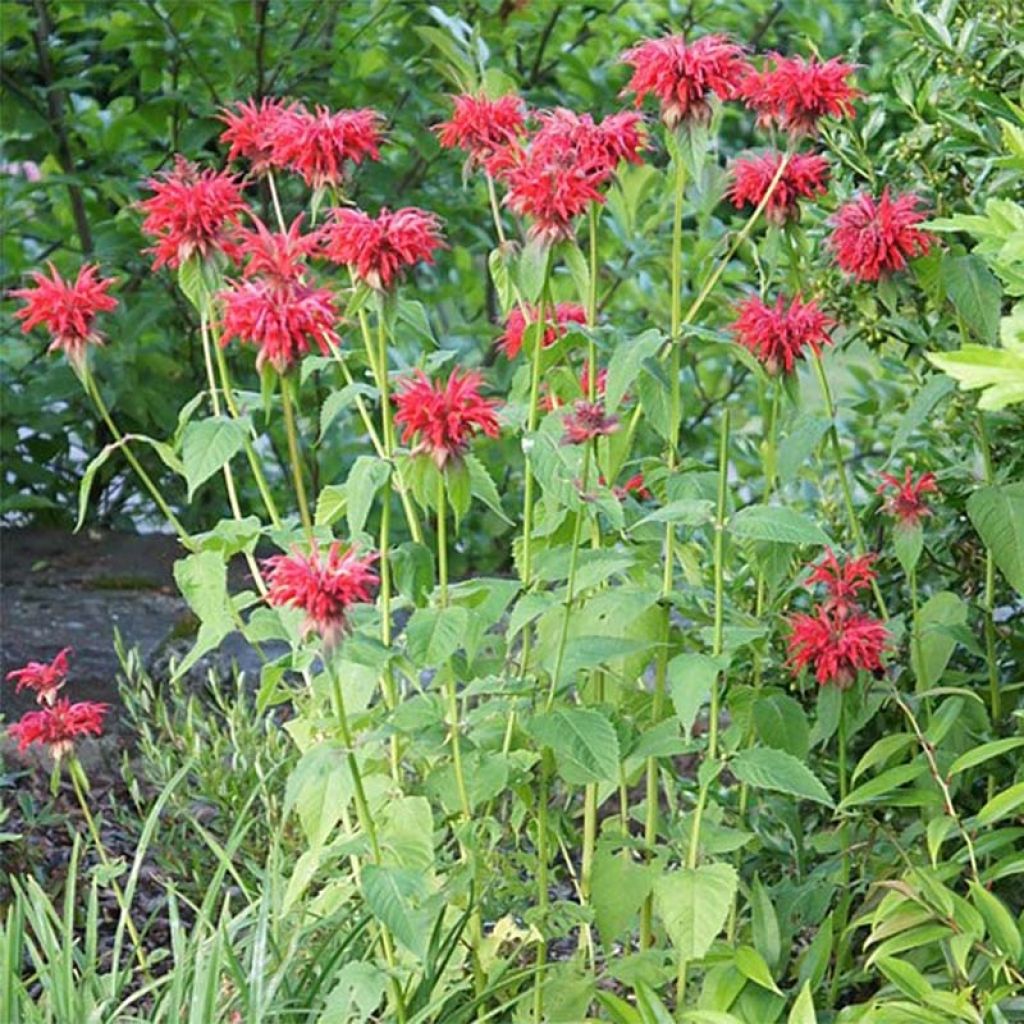

Monarda Cambridge Scarlet - Beebalm


Monarda Cambridge Scarlet - Beebalm


Monarda Cambridge Scarlet - Beebalm
Monarda Cambridge Scarlet - Beebalm
Monarda Cambridge Scarlet
Bergamot, Bee Balm, Oswego Tea, Horsemint
This item cannot be shipped to the selected country
Delivery charge from €5.90
More information
Schedule delivery date,
and select date in basket
This plant carries a 12 months recovery warranty
More information
We guarantee the quality of our plants for a full growing cycle, and will replace at our expense any plant that fails to recover under normal climatic and planting conditions.
From €5.90 for pickup delivery and €6.90 for home delivery
Express home delivery from €8.90.

Does this plant fit my garden?
Set up your Plantfit profile →
Description
Monarda 'Cambridge Scarlet is vigorous and loved for the brilliance of its intense red flowers. The tousled heads of purple bracts rise above a tuft of superb aromatic leaves. This versatile perennial should be planted in ordinary, not too dry soil at the back of sunny beds or in very light woodland.
Monardas form a bouquet of tousled flowers from the beginning of summer until October, on a deliciously aromatic, disease-resistant foliage. It is a large, floriferous but demanding perennial, which spreads quickly in fertile, ordinary, moist soil, in a sunny or semi-shaded position.
Monarda 'Cambridge Scarlet' belongs to the Lamiaceae or Labiate family, which includes many medicinal and aromatic plants. It is one of many hybrids of M. didyma and M. fistulosa, both native to North America. It is a large herbaceous perennial, with an upright clump habit rapidly reaching a height of 90 cm (35in), with a minimum spread of 40 cm (16in). It flowers from July onwards, and can continue until October if faded flowers are removed. The tousled shape of its inflorescences is unique. They are composed of scarlet red, curved flowers washed with purple, 5 to 7 cm (2 to 3in) long, surrounded by darker bracts, and have an upright upper lip and a spread-out lower lip divided into three lobes perched on upright stems. The flowers are nectar-rich. The medium green foliage is tinged with purple in this variety, and aromatic when crushed, releasing a pleasant citrus scent. The opposite, veined and toothed leaves are 10 to 15 cm (4 to 6in) long and often attract insects. This plant spreads through its fine rhizomes, without becoming invasive. It is very hardy, and can also be very long-lived if the growing conditions are good.
In flower beds and borders, Monarda 'Scarlet Cambridge' sets summer ablaze with shimmering or pastel colours. Plant it in groups of six to obtain a beautiful mass of flowers, and combine it with lobelias or fuchsia pink spiked willows. Monarda 'Scarlet Cambridge' also pairs well with persicarias, Campanula lactiflora, Echinaceas, and tall grasses such as Miscanthus or Pennisetums. It is suitable for landscaping water edges, if well-drained, where it enjoys the moisture. It is also found in meadows and forests. Its flowers are delightful for creating beautiful bouquets. It is worth noting that Monarda contains essential oils similar to those of thyme, and tea can be made from its fresh or dried leaves or flowers. The young shoots can also be used in salads or stuffing roast.
Report an error about the product description
Monarda Cambridge Scarlet - Beebalm in pictures






Flowering
Foliage
Plant habit
Botanical data
Monarda
Cambridge Scarlet
Lamiaceae
Bergamot, Bee Balm, Oswego Tea, Horsemint
Cultivar or hybrid
Other Monarda - Bee Balm
Planting and care
Monarda 'Cambridge Scarlet' likes moist, but well-drained, very fertile, light and humus-rich soil. They do not tolerate competition from other roots well. After planting, mulch the base with a layer of dead leaves, or anything that can maintain soil moisture. Winter wet is also an enemy for monardas, so ensure good drainage when planting. In summer drought, water the plants regularly to avoid powdery mildew. In autumn, cut back the withered stems to ground level. In poor soils, spread well-rotted compost over the crowns.
Planting period
Intended location
Care
-
, onOrder confirmed
Reply from on Promesse de fleurs
Summer flowering perennials
Haven't found what you were looking for?
Hardiness is the lowest winter temperature a plant can endure without suffering serious damage or even dying. However, hardiness is affected by location (a sheltered area, such as a patio), protection (winter cover) and soil type (hardiness is improved by well-drained soil).

Photo Sharing Terms & Conditions
In order to encourage gardeners to interact and share their experiences, Promesse de fleurs offers various media enabling content to be uploaded onto its Site - in particular via the ‘Photo sharing’ module.
The User agrees to refrain from:
- Posting any content that is illegal, prejudicial, insulting, racist, inciteful to hatred, revisionist, contrary to public decency, that infringes on privacy or on the privacy rights of third parties, in particular the publicity rights of persons and goods, intellectual property rights, or the right to privacy.
- Submitting content on behalf of a third party;
- Impersonate the identity of a third party and/or publish any personal information about a third party;
In general, the User undertakes to refrain from any unethical behaviour.
All Content (in particular text, comments, files, images, photos, videos, creative works, etc.), which may be subject to property or intellectual property rights, image or other private rights, shall remain the property of the User, subject to the limited rights granted by the terms of the licence granted by Promesse de fleurs as stated below. Users are at liberty to publish or not to publish such Content on the Site, notably via the ‘Photo Sharing’ facility, and accept that this Content shall be made public and freely accessible, notably on the Internet.
Users further acknowledge, undertake to have ,and guarantee that they hold all necessary rights and permissions to publish such material on the Site, in particular with regard to the legislation in force pertaining to any privacy, property, intellectual property, image, or contractual rights, or rights of any other nature. By publishing such Content on the Site, Users acknowledge accepting full liability as publishers of the Content within the meaning of the law, and grant Promesse de fleurs, free of charge, an inclusive, worldwide licence for the said Content for the entire duration of its publication, including all reproduction, representation, up/downloading, displaying, performing, transmission, and storage rights.
Users also grant permission for their name to be linked to the Content and accept that this link may not always be made available.
By engaging in posting material, Users consent to their Content becoming automatically accessible on the Internet, in particular on other sites and/or blogs and/or web pages of the Promesse de fleurs site, including in particular social pages and the Promesse de fleurs catalogue.
Users may secure the removal of entrusted content free of charge by issuing a simple request via our contact form.
The flowering period indicated on our website applies to countries and regions located in USDA zone 8 (France, the United Kingdom, Ireland, the Netherlands, etc.)
It will vary according to where you live:
- In zones 9 to 10 (Italy, Spain, Greece, etc.), flowering will occur about 2 to 4 weeks earlier.
- In zones 6 to 7 (Germany, Poland, Slovenia, and lower mountainous regions), flowering will be delayed by 2 to 3 weeks.
- In zone 5 (Central Europe, Scandinavia), blooming will be delayed by 3 to 5 weeks.
In temperate climates, pruning of spring-flowering shrubs (forsythia, spireas, etc.) should be done just after flowering.
Pruning of summer-flowering shrubs (Indian Lilac, Perovskia, etc.) can be done in winter or spring.
In cold regions as well as with frost-sensitive plants, avoid pruning too early when severe frosts may still occur.
The planting period indicated on our website applies to countries and regions located in USDA zone 8 (France, United Kingdom, Ireland, Netherlands).
It will vary according to where you live:
- In Mediterranean zones (Marseille, Madrid, Milan, etc.), autumn and winter are the best planting periods.
- In continental zones (Strasbourg, Munich, Vienna, etc.), delay planting by 2 to 3 weeks in spring and bring it forward by 2 to 4 weeks in autumn.
- In mountainous regions (the Alps, Pyrenees, Carpathians, etc.), it is best to plant in late spring (May-June) or late summer (August-September).
The harvesting period indicated on our website applies to countries and regions in USDA zone 8 (France, England, Ireland, the Netherlands).
In colder areas (Scandinavia, Poland, Austria...) fruit and vegetable harvests are likely to be delayed by 3-4 weeks.
In warmer areas (Italy, Spain, Greece, etc.), harvesting will probably take place earlier, depending on weather conditions.
The sowing periods indicated on our website apply to countries and regions within USDA Zone 8 (France, UK, Ireland, Netherlands).
In colder areas (Scandinavia, Poland, Austria...), delay any outdoor sowing by 3-4 weeks, or sow under glass.
In warmer climes (Italy, Spain, Greece, etc.), bring outdoor sowing forward by a few weeks.




































